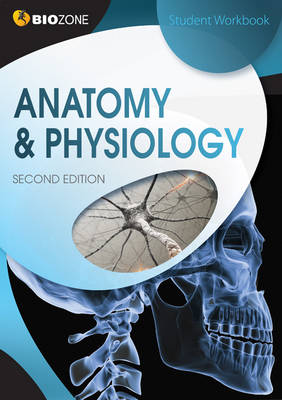Filters
Clear allSubject
- Careers (142) Apply Careers filter
- Climate Change (17) Apply Climate Change filter
- Computing (6) Apply Computing filter
- Creative arts and media (3) Apply Creative arts and media filter
- Cross curricular (50) Apply Cross curricular filter
- Design and technology (85) Apply Design and technology filter
- Engineering (36) Apply Engineering filter
- Food Preparation and Nutrition (37) Apply Food Preparation and Nutrition filter
- Mathematics (56) Apply Mathematics filter
- Psychology (12) Apply Psychology filter
- STEM Ambassadors (10) Apply STEM Ambassadors filter
- STEM Clubs (3) Apply STEM Clubs filter
Age range
Type
- Activity sheet (577) Apply Activity sheet filter
- Article (175) Apply Article filter
- Assessment (10) Apply Assessment filter
- Audio (55) Apply Audio filter
- Data set (5) Apply Data set filter
- Demonstration (3) Apply Demonstration filter
- Diagram (3) Apply Diagram filter
- Experiment (73) Apply Experiment filter
- Game (26) Apply Game filter
- Group work (25) Apply Group work filter
- Image (58) Apply Image filter
- Information sheet (179) Apply Information sheet filter
- Interactive resource (55) Apply Interactive resource filter
- Lecture (2) Apply Lecture filter
- Open-ended task (10) Apply Open-ended task filter
- Poster (26) Apply Poster filter
- Presentation (202) Apply Presentation filter
- Quiz (25) Apply Quiz filter
- Research (77) Apply Research filter
- Self assessment (2) Apply Self assessment filter
- Simulation (2) Apply Simulation filter
- Teacher guidance (785) Apply Teacher guidance filter
- Textbook (119) Apply Textbook filter
- Video (219) Apply Video filter
- (-) Remove Include Physical Resources filter Include Physical Resources
Showing 2279 results
This podcast from the Natural Environment Research Council's (NERC) Planet Earth Online collection looks at invasive species of plants and animals. Many of them are well-known. Grey squirrels, harlequin ladybirds, buddleia, Japanese knotweed - the list goes on. Some of these aliens, or invasive species to give them...
Alison Foster has combined her education in Chemistry with her love of plants to engage in some exciting projects at the University of Oxford Botanic Gardens. This Catalyst article gives a profile of her career choices, and introduces a public engagement activity called Chemistry in the Garden.
Alison began...
These activities, from Eurostemcell, introduce students to the science of stem cells and explore four basic themes in stem cell biology: 1. What is a stem cell? – what stem cells can do; types of stem cell 2. Where do embryonic stem cells come from? – the blastocyst; cell culture; IVF 3. Why bother with stem cells...
A first science series that introduces young readers to basic science principles in a friendly and accessible way. Early scientific skills are taught through a combination of...
This resource explores how there can sometimes be conflict between people and animals in some habitats and how the World Land Trust's conservation partners work to protect local people as well as animals such as Indian elephants and Bengal tigers. Pupils are encouraged to think about what they might do to support...

Dig deep and explore the incredible plant life cycle story. From tiny seeds to small shoots, long branches and mighty tree trunks, explore the life cycle of plants and find out what plants need to...
This resource for Key Stage Three and Key Stage Four students provides some statistics about the eating habits of children in Italy and asks students to compare and contrast these with their own eating habits. Through this activity, students have to interpret charts and graphs, plan how to collect data and design a...
From the National Non-Food Crops centre (NNFC), this factsheet reviews the potential of anaerobic digestion technology and its suitability to UK farming and waste systems. The factsheet describes the application of anaerobic digestion (AD), which is the conversion of organic non-woody material in the absence of...
This Cape Farewell video clip shows scientists back at the National Oceanography Centre in Southampton, analysing the samples of phytoplankton and zooplankton taken in the Arctic, identifying species and counting their abundance.
Activity G - Plankton analysis is...

Anatomy and Physiology Student Workbook explores the essentials of human structure and function through engaging, generously illustrated write-on activities. Much of the content in the first edition has been revised...
The untold story of the rise of the new scientific field of ancient DNA research, and how Jurassic Park and popular media influenced its development.
These books, from the Association for the Study of Animal Behaviour (ASAB), aimed to encourage the use of more practical work on animal and human behaviour and to enable students to develop an understanding of some basic principles of animal behaviour, relevant to biology and psychology.
Although originally...
Produced by ARKive, in this activity students classify animals into broad groups (vertebrates and invertebrates, amphibian, bird, fish, mammal, reptile).
In the second section of the activity students are encouraged to use the ARKive website to find out how different species are adapted for the environment...
Produced by the new economics foundation (nef), this resource contains activities that help students to discuss and understand the issues around the use of animals for research. The materials contain teacher guidance, student information and a range of activities that promote discussion and debate. Students...
In this SATIS Revisited resource, students consider the ethical questions that arise from the conflicts between concern for animal welfare and the need to use animals in medical research.
The aim is to introduce the idea that the discussion of controversial issues relating to the conduct and application of...
